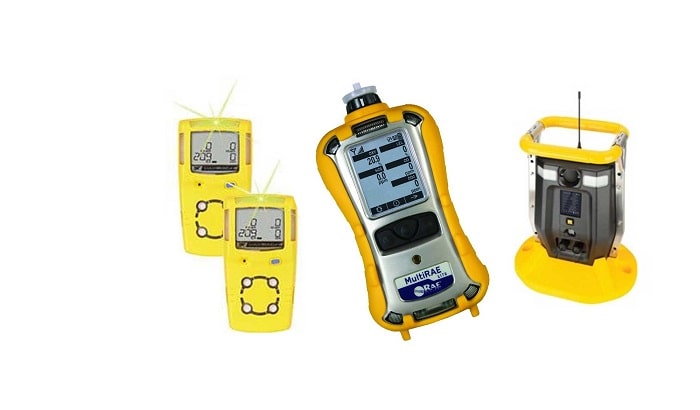Gas detection can help prevent accidents by alerting users when hazardous gases are present. These devices use a variety of sensors to identify atmospheric hazards, such as combustible gases and toxic vapors.
Portable gas analyzers are a crucial piece of personal safety equipment for emergency responders and workers entering confined spaces. They can come in single-gas form, detecting just one type of gas, or multi-gas, tracking several different chemicals simultaneously.
Carbon Monoxide
Carbon Monoxide is a colorless, odorless gas that forms when fuel burns. It prevents the body from absorbing oxygen and can lead to death by asphyxiation. Carbon Monoxide is a major threat to people with breathing conditions such as asthma, COPD, and emphysema. It is also a concern for pregnant women and infants. Carbon Monoxide detectors work by using electrochemical sensors to detect the chemical. When a carbon monoxide-rich gas passes through the sensor, it changes the electrodes’ electrical resistance, which in turn triggers an alarm.
Furnaces, fireplaces, gas stoves, and charcoal grills often produce carbon monoxide. It can also be released by cars that are left running in attached garages or auto shops. Carbon Monoxide poisoning can cause nausea, headache, and loss of consciousness, depending on the concentration level. It is also highly dangerous to people with heart or lung disease.
Many portable gas monitors can detect combustible gases. They do this by examining the lower explosive limit (LEL) of combustible gas or vapor, which measures how much is in the air that can combust if an ignition source like flame or heat is present. They may also read the upper explosive limit (UEL), which is how much is needed for the gas to combust at normal temperatures.
Some detectors are built to monitor multiple gases, such as carbon monoxide, hydrogen sulfide, and oxygen. The GasLab Plus Multi-Gas Detector is an example of this type of device. It can detect CO, flammable gases, and hydrogen and has other safety features, including data logging and a large backlit LCD screen.
Portable gas detectors should be worn near a person’s face in what is known as the “breathing zone.” This means within a nine-inch radius of a person’s nose and mouth, where they draw in oxygen. This ensures that the monitor can properly assess the air a person breathes. The sensitivity of each monitor can vary, but most can be adjusted. It is a good idea to consult the manufacturer’s specifications to determine the correct range for each unit.
Hydrogen Sulfide
Hydrogen Sulfide (H2S) is a colorless, flammable gas with the odor of rotten eggs. It is found in crude petroleum and natural gas, volcanic gases, sulfur deposits, hot springs, some swamps, and the bacterial breakdown of organic material. Humans also produce hydrogen sulfide in their mouths and gastrointestinal tracts from bacteria decomposing food containing vegetable or animal proteins. It can be lethal at high concentration levels.
A portable H2S detector is designed to detect this toxic gas. Like carbon monoxide detectors, these devices consist of a sensor that converts the chemical to electronic signals for display on an easy-to-read screen. When the sensors register a higher concentration of gas than what is safe, they send a signal to warn workers in the area. The device may emit a sound, visual, or vibrating alarm, depending on the manufacturer.
If workers inhale hydrogen sulfide, they may experience irritation of the eyes or throat. At very low concentrations, it can cause nausea and vomiting. Higher concentrations can result in pulmonary edema, which leads to death if not treated quickly.
When working in confined spaces, people may need to wear a breathing apparatus or PAPR (Personal Air Permeable Respirator) with an H2S filter. They should also know the early warning signs of exposure, which include a pungent odor, nausea, headache, and loss of smell due to olfactory fatigue.
Unlike other units of measurement, such as mols or oz, ppm is the standard measure of gas concentration used by portable gas detectors. A ppm reading gives the user the percentage of air that has been taken up by the gas and is a convenient way to understand the level of danger.
Using a handheld unit with a built-in battery, such as the SGT-P H2S portable gas monitor, makes checking current live readings for this dangerous gas easier. The device has an easy-to-read LCD display and offers a backlight option. It has a 2-year life and automatically tests its battery every 20 hours. It also provides an at-a-glance graphical display of live psi and %LEL readings.
Nitrogen Dioxide
Nitrogen dioxide, also known as NO2, is a poisonous gas that can cause irritation to the skin and eyes, causing breathing problems. It can also lead to lung diseases and aggravate cardiovascular disorders. It is emitted by fossil fuel combustion, industrial processes, and vehicle traffic, contributing to the formation of acid rain. A portable single and multi-gas detector can monitor the concentration of this gas and alert users when it reaches dangerous levels.
A common type of portable device is a photoionization detector (PID), which uses a series of electrical sparks to activate molecules in the presence of gas. When these molecules return to their normal state, they release energy in the form of light that is measured by a photomultiplier tube within the device. Using this technique, PID devices can detect a wide range of gases, including flammable and toxic chemicals.
Other types of portable single-gas monitors use electrochemical sensors to measure a number of compounds and gases, such as oxygen depletion, carbon monoxide, hydrogen sulfide, acetylene, ammonia, chlorine, bromine, sulfur dioxide, neon, hydrogen peroxide, and nitrogen oxide. Unlike photoionization detectors, these monitors do not require the use of a battery and are capable of continuous monitoring in the field.
Portable devices are not only used by workers in hazardous areas but also by hazmat responders and fire departments to assess the condition of an area before entering. Understanding the types of gases that a portable device can detect will help industrial hygienists and safety managers make better decisions about the appropriate level of personal protective equipment for employees to wear.
In addition to ensuring the proper functioning of portable gas detectors, they should be checked regularly by administering a bump test. This involves manually administering a concentrated amount of gas to the high enough device to trigger the alarm and validate the sensor’s operation. In addition to daily bump tests, many companies also employ an onsite calibration system to check for drift and ensure that the device operates accurately. For more information on how to choose the right gas detection equipment for your workplace, download our free eBook.
Carbon Dioxide
Carbon dioxide is a clear gas that is composed of one carbon atom and two oxygen atoms. It is found in low concentrations naturally in Earth’s atmosphere, and it also controls the global climate. CO2 is not toxic at normal levels but can build up to dangerous levels in confined spaces or in areas where ventilation is limited. Inhaling high levels of carbon dioxide for extended periods can cause asphyxiation.
Carbon Dioxide (CO2) gas detectors are used to detect this inert gas and alert users when the levels are too high to be safe. These handheld devices are designed to be user-friendly and feature a large back-lit LCD screen, data logging, and audible alarm.
In a similar fashion to carbon monoxide, carbon dioxide can be emitted from fuel-burning equipment in confined spaces without proper ventilation and can lead to CO poisoning. This is especially true in colder climates where people are indoors more and use furnaces or heaters to keep warm. This can increase the amount of CO in the air and result in an elevated CO concentration in the confined space, which is why carbon dioxide detection is vitally important in winter.
High levels of carbon dioxide in the air can cause a person to pass out from asphyxiation within minutes and can even lead to death from CO poisoning. For this reason, carbon dioxide monitors are a must for any workplace. Portable units are perfect for workers who need to enter and leave locations that store or use CO2, such as breweries, pub cellars, and laboratories.
Fixed carbon dioxide monitors are also a great option for those who need to measure CO2 in multiple places, such as chemical plants and gas processing facilities. These units are typically explosion-proof, making them ideal for industrial applications.
CO2 is typically marketed in steel cylinders under sufficient pressure to keep it liquid or in solid form as dry ice (compressed carbon dioxide snow, density 1.35). It can also be found in other packaging materials, such as polyethylene and polypropylene bags.


